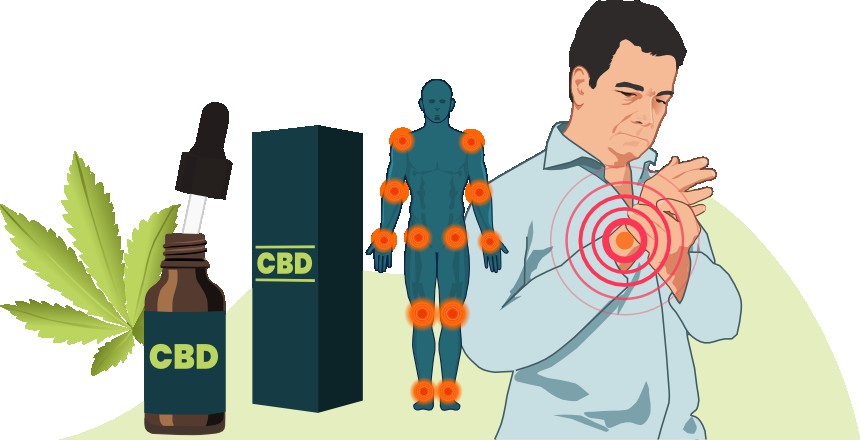 Today, you’re going to learn everything about how to use CBD oil for pain management.
Today, you’re going to learn everything about how to use CBD oil for pain management.
We reviewed over 50 scientific articles that looked at:
- The potential benefits and effects of CBD, including for pain;
- The mechanisms of action that give CBD its painkilling properties, and;
- What doses of CBD were found effective in different studies for reducing pain.
The results we found are a MUST-read for anyone interested in exploring the benefits of CBD for pain.
The best part?
You’re going to learn exactly what type of CBD oil has the most potential to give you pain-relieving effects.
And also:
What you need to do to maximize CBD oil’s potential for pain relief.
Plus, you’re going to learn whether topical CBD products may be a better alternative or not.
Keep reading!
Table of contents:
The Types of Pain CBD May Relieve (Review of Studies)
How CBD Works for Pain Relief: CBD’s Mechanism of Action
What’s the Best CBD Oil for Pain Relief?
Are Topical CBD Products an Effective Alternative?
Below you can find a quick step-by-step summary on how to use CBD oil for pain. If you want to dive deeper into the science of using CBD for pain, please read the full article.
The Types of Pain CBD May Relieve (Review of Studies)
Research shows that CBD can have beneficial effects on pain-related conditions.
CBD and Chronic Pain
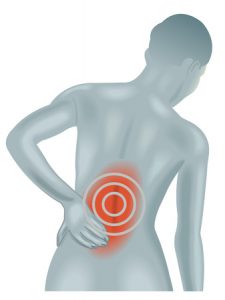 Various studies found beneficial effects of CBD for chronic pain.
Various studies found beneficial effects of CBD for chronic pain.
However, most of these are animal studies.
A 2012 study published in the “Journal of Experimental Medicine”, measured CBD’s effects on chronic inflammatory and neuropathic pain in mice (1).
CBD significantly suppressed chronic inflammatory and neuropathic pain through interacting with glycine receptors. And it did so without building any tolerance levels or side effects.
Glycine receptors (GlyRs) play an important role in the regulation of pain at the spinal level.
A recent 2018 study with human kidney transplant patients looked at the effects of CBD on chronic pain (2). It found that:
- 2 out of 7 patients had a total pain improvement. The dose started with 100 mg CBD/day and progressively increased up to 300 mg CBD/day. The total daily dose was spread out over the day in smaller doses;
- 4 out of 7 patients had a partial pain improvement. The dose started with 100 mg CBD/day and progressively increased up to 300 mg CBD/day. The total daily dose was spread out over the day in smaller doses. With these patients the pain lessened significantly but didn’t completely disappear, and;
- 1 patient didn’t improve at all.
Interestingly enough, 1 patient experienced much better pain control with a lower dose (less than 300 mg of CBD/day). This means that more CBD is not always better.
CBD and Digestive Pain/Inflammatory Bowel Disease
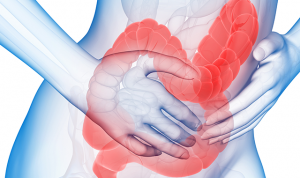 Cannabinoids may relieve the pain associated with conditions like inflammatory bowel disease.
Cannabinoids may relieve the pain associated with conditions like inflammatory bowel disease.
Research found that cannabinoids can have beneficial effects on inflammatory bowel diseases (3).
Of all cannabinoids both THC and CBD have the biggest potential.
CBD is protective of intestinal inflammation.
Pre-clinical studies show that CBD has an anti-inflammatory effect on intestinal inflammation (4).
The exact mechanism responsible for this effect needs further research. But researchers found that CBD acts as an antagonist to GPR55, a receptor that plays a crucial role in intestinal inflammation.
By binding to the GPR55 receptor, CBD may work as a desensitizing agent on this receptor. A less sensitive GPR55 receptor may decrease inflammation.
CBD and Arthritis Pain
Arthritis is characterized by inflammation of the joints.
A 2016 study published in the “European Journal of Pain” found that CBD reduced inflammation and pain in rats with arthritis (5). The rats received a topical gel for 4 days. The gel was effective without side effects.
It makes sense that CBD could help relieve any inflammation-related pain condition due to its powerful anti-inflammatory effects.
Many CBD users report that it helps to relieve pain. But CBD user reports also include other inflammatory conditions, like:
Studies are still needed to confirm these effects.
Note: CBD may not only relieve physical pain but mental pain like anxiety and depression as well.
CBD and Cancer-related Pain
Oromucosal sprays containing both CBD and THC are effective in improving cancer-related pain.
One study looked at the effects of “Sativex” on pain in cancer patients. Sativex is a CBD- and THC-containing spray. The patients in the study had pain that wasn’t fully relieved by strong opioid painkillers (6).
The study found that the CBD-containing spray improved pain. Pain was measured by different metrics like ‘pain severity’. The CBD-containing spray was generally well tolerated and showed no loss of effect.
Now:
Important to note here is that the spray had higher concentrations of THC than in the average CBD oil. The question remains on how much of these painkilling effects come from:
- CBD,
- THC, or,
- the combination of both cannabinoids.
CBD and Headaches like Migraine
Research also looked at the effects of cannabinoids on headaches like:
- migraine, and,
- chronic cluster headaches.
For example:
A 2017 study looked at the effects of CBD and THC on migraine and cluster headache (7).
In phase 1 of the study, a group of 49 chronic migraine patients was given an oral dose of THC and CBD. The approximate THC to CBD ratio of the oral dose was 2:1 for THC:CBD (the exact percentages were 19.4% THC and 9% CBD). The outcome was that doses of less than 100mg produced no effects. When an oral dose of 200mg was administered, the acute pain dropped by 55%.
In phase 2, 79 chronic migraine patients got a daily dose of 200mg of the THC-CBD combination for a period of three months.
The results:
The severity and number of cluster headache attacks only fell slightly. However, the cannabinoid formulation reduced pain intensity among migraine patients by 43.5%.
Again:
The question remains on how much of these painkilling effects come from:
- CBD,
- THC, or,
- the combination of both cannabinoids.
There’s a lot of anecdotal evidence and some scientific evidence supporting the use of CBD for pain relief.
But what makes CBD a potential painkiller? What’s CBD’s mechanism of action in human physiological processes?
How CBD Works for Pain Relief: CBD’s Mechanism of Action
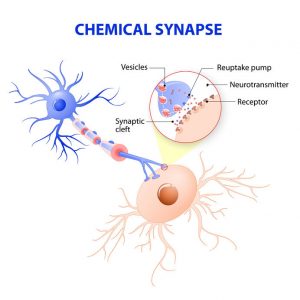
CBD interacts directly with a variety of receptors like:
- CB1 and CB2 receptors;
- Glycerine receptors;
- Opioid receptors;
- Serotonin receptors;
- Adenosine receptors, and;
- TRPV1 receptors.
These receptors and their neurotransmitters are associated with pain-related processes like:
- pain-signaling, and,
- pain-sensation.
CBD may relieve pain by interacting with these receptors.
When you ingest CBD, you can alter the functioning of some of these receptors.
The CBD inside CBD oil in some cases activates pain-reducing receptors.
In other cases, CBD blocks pain-increasing receptors.
But also:
By blocking receptors, CBD sometimes increases pain-reducing neurotransmitters by blocking re-uptake.
Other times it leads to desensitization, decreasing the activity of pain-increasing neurotransmitters.
Research shows that CBD interacts with 5 receptors involved in pain:
- Delta-opioid receptors;
- 5-HT1A (hydroxytryptamine) serotonin receptors;
- Adenosine receptors;
- TRPV1 receptors (vanilloid receptors). and;
- Glycine receptors.
Let’s explore these a bit further.
CBD and Its Interaction with Delta-Opioid Receptors
Opioid receptors are associated with important physiological processes like:
- Pain signaling in the central and the peripheral nervous system;
- Reproduction;
- Growth;
- Respiration, and;
- Immunological response.
Opioid drugs like morphine are effective as painkillers because they target opioid receptors.
CBD doesn’t target opioid receptors directly. But different studies show that CBD acts as an ‘allosteric modulator’ to opioid receptors (8).
An allosteric modulaor increases the effectiveness of other compounds.
CBD increases the effectiveness of compounds that directly interact with opioid receptors.
When you combine CBD with opioid-receptor targeting agents, you may make them more effective.
CBD and Its Interaction with 5-HT1A (hydroxytryptamine) Serotonin Receptors
Serotonin receptors and neurotransmitters are associated with a huge list of biological processes like:
- Pain perception;
- Sensory pain-processing at multiple levels within the central and peripheral nervous systems;
- Cardiovascular function;
- Bowel motility;
- Ejaculatory latency, and;
- Bladder control.
Serotonin is often referred to as a “feel-good neurotransmitter”. When serotonin neurotransmitters are active they can have an anti-depressant effect. They can improve your general sense of well-being.
Now, here comes the interesting part about serotonin receptors and neurotransmitters:
Recent studies found that activation of 5-HT(1A) receptors (a specific type of serotonin receptor) can decrease chronic pain (9).
The exact mechanism of action needs further research …
But CBD activates 5-HT(1A) serotonin receptors (10).
CBD’s activation of 5-HT(1A) receptors could be partially responsible for its painkilling effects.
CBD and Its Interaction with Adenosine Receptors
Adenosine receptors are associated with many biological functions like:
- Heart function;
- Regulation of myocardial oxygen consumption and coronary blood flow;
- Inflammation and immune responses throughout the body;
- Regulating the release of neurotransmitters such as dopamine and glutamate.
Adenosine signaling has been associated with anti-inflammatory effects.
Adenosine uptake is the primary mechanism that stops adenosine signaling.
Compounds that prevent adenosine uptake, promote adenosine signaling and thus promote anti-inflammatory effects.
Studies have shown that CBD increases adenosine A2A receptor signaling. It does so by inhibition of the adenosine transporter (11).
CBD’s affinity to bind to adenosine receptors may be a mechanism that results in its anti-inflammatory effects.
CBD and Its Interaction with Vanilloid Receptor 1 (TRPV1)
Vanilloid receptor 1 (TRPV1) is also called the ‘capsaicin receptor’. It gets activated by:
- Capsaicin (the irritating compound in hot chili peppers);
- A temperature greater than 109 °F (43 °C ), and;
- Acidic conditions.
Vanilloid receptor 1 has a role in processing painful stimuli and the transmission and modulation of pain.
TRPV1 receptors work the opposite way of 5-HT(1A) serotonin receptors when it comes to pain. When they’re active, you experience a heightened sense of pain.
CBD has been shown to bind to (block) vanilloid receptors, blocking their activity.
Researchers have hypothesized that by binding to vanilloid receptors, CBD desensitizes TRPV1 receptors. Desensitization of vanilloid receptors , in turn, leads to painkilling effects (12).
CBD and Its Interaction with Glycine Receptors (GlyRs)
Glycine receptors inhibit neurotransmission in the spinal cord and the brainstem.
Activation of glycine receptors decreases neuronal signaling of specific neurons. Some of these neurons are associated with motor control and pain perception.
CBD activates glycine receptors. Activation of glycine receptors has been associated with a reduction in pain (13).
What’s the Best CBD Oil for Pain Relief?
 The best product to explore CBD’s potential for pain relief is any full-spectrum CBD oil. A full-spectrum CBD oil comes with a variety of:
The best product to explore CBD’s potential for pain relief is any full-spectrum CBD oil. A full-spectrum CBD oil comes with a variety of:
- Cannabinoids, and;
- Terpenes.
Hemp plants contain many other beneficial compounds besides CBD.
Cannabinoids like THC and CBG are associated with painkilling effects. Hemp plants also contain terpenes. Some terpenes like caryophyllene and myrcene are associated with anti-inflammatory effects.
All these different cannabinoids and terpenes have beneficial effects in and of themselves. But more importantly, research suggest that CBD works best in combination with other hemp compounds. Compounds like other cannabinoids and terpenes. This process is called “the entourage effect”.
A full spectrum or full-plant extract CBD oil makes the best case for the entourage effect. It will let you experience CBD’s effects for improving pain in the most potent way.
For a current list of our most recommended CBD oils for pain, click the link below:
Are Topical CBD Products a Good Alternative to Oil When It Comes to Pain Relief?
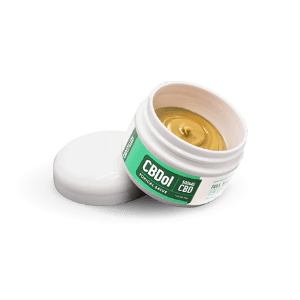 Topically applied CBD may prove to be useful for certain pain-related conditions.
Topically applied CBD may prove to be useful for certain pain-related conditions.
One 2020 study found that topical CBD oil relieves peripheral neuropathy of the lower extremities (14). In this study, patients received CBD for 4 weeks. The CBD treatment reduced:
- intense pain,
- sharp pain,
- cold and itchy sensations.
One animal study found that topical CBD reduces pain and inflammation in rats with arthritis.
Topically applied CBD could also be effective for inflammatory skin conditions. It may help reduce pain associated with these types of skin conditions.
For example:
A study with 20 patients with two frequent skin disorders:
- psoriasis, and,
- atopic dermatitis,
found that CBD’s anti-inflammatory effects can provide significant relief (15).
There are also plenty of anecdotal reports. Some people see good results for pain management with CBD creams.
But are topical CBD products like creams more effective than oils/tinctures?
Without a properly conducted scientific study, we can’t say with certainty…
But in our subjective experience, a combination of both works best. Especially when it comes to certain types of pain like exercise-induced inflammation/pain.
How to Use CBD Oil for Pain Relief (Administration Methods)
Taking a full-spectrum CBD oil sublingually is our most recommended method to take CBD oil for pain relief.
Here’s why:
- With edible CBD oils, it’s very easy and reliable to dose the exact amount of CBD you ingest;
- Full-spectrum CBD oils are the most potent products. Why? Because they contain the most minor cannabinoids and terpenes of all CBD products, and;
- The effects last the longest (2-5 hours).
Taking CBD for pain relief through oral consumption also has a few downsides:
Compared to vaping, for example, it takes much longer for you to feel effects. It takes 2-4 hours for oral CBD to reach full effects. Vaped CBD only takes 5-15 minutes.
When taking CBD oil orally, always combine it with the sublingual method. This way, you avoid the ‘first-pass effect’.
The first-pass effect refers to the metabolization of compounds by the stomach and liver. When you swallow a compound, it goes through the stomach and liver before it reaches your bloodstream. When you take CBD oil sublingually, part of the compounds get absorbed through the mucous membrane beneath your tongue.
To take your CBD oil sublingually, keep it under your tongue for at least 60 seconds. After that, swallow the oil.
How you take your CBD oil sublingually is by keeping it under your tongue for at least 60 seconds, and only after that, swallowing it.
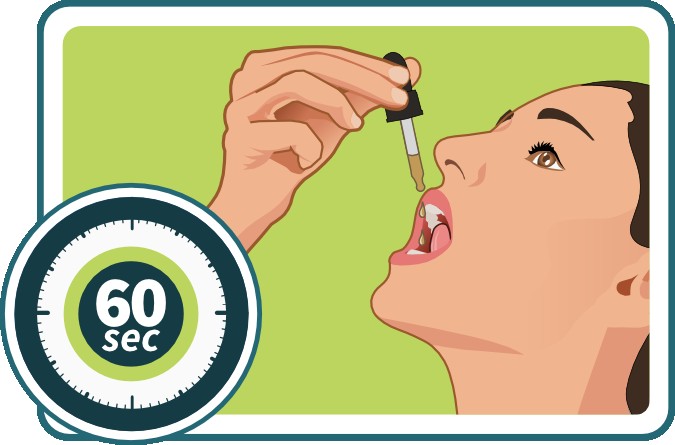
Another option you have is taking CBD gummies.
Just in keep in mind that:
Most CBD gummies don’t contain as many and different hemp compounds as oil/tinctures.
We wrote an extensive guide on the topic of the best methods to take CBD oil, which you can read below:
How to Dose CBD Oil for Pain
The kidney transplant study (2) found painkilling effects with an initial dose of 100 mg/day. And a progressive increase of up to 300 mg/day. The daily dose was spread out over the day in smaller doses.
Realize that with high doses like these, taking full-spectrum CBD oil is going to be expensive. For example, a NuLeaf Naturals CBD oil has a strength of 50mg CBD/milliliter. A 0.5 FL OZ (15ml) bottle of their pure CBD hemp oil contains 725mg of CBD and costs $70. If you’re going to take 100mg of CBD, a $70 bottle is only going to last you 7 days.
One study found epilepsy patients that used full-spectrum CBD needed a much smaller dose than epilepsy patients that used a purified CBD product (16). Something similar might hold true pain relief.
To find a high-quality full-spectrum CBD oil, go to our list of:
Whatever you do, never use more than 1500mg/day. This is the current maximum recommended dose according to several studies.
Also be aware that if you’re taking other medicines, be extra careful with high doses. CBD could potentially interact with many pharmaceutical drugs and create various side effects.
Note that how many drops you need to get a certain amount of CBD, is highly dependent on the CBD oil that you’re using. CBD oils come in many different strengths with potencies of 1% CBD to 30% CBD.
For example, NuLeaf Naturals CBD oil has a strength of 50mg CBD/milliliter or 6.94%. A 0.5 FL OZ (15ml) bottle of their pure CBD hemp oil contains 725mg of CBD. In their case, 1 drop = 2.4 mg of CBD, which means there are 300-320 drops in total. Start with a full serving as recommended by the manufacturer. In the case of this oil, this would amount to 30mg of CBD + 3.9mg minor cannabinoids and terpenes.
Now:
If you notice that you don’t have any adverse reactions, you can slowly start to increase the dose. But you only need to increase if you don’t feel enough positive effects from your initial dose.
Continue taking up to the maximum amounts slowly over your first four weeks. Evaluate how it helps to relieve your symptoms, take notes, and journal. Keep in mind that peak effects of orally consumed CBD appear only after 2 to 4 hours.
This is exactly the method that was used in the kidney-transplant study (2).
For a guide on unofficial CBD dosages, click the link below:
How Long Does It Take for CBD Oil to Work for Pain Relief?
You can use anecdotal reports and the results of a few studies as a guide for knowing when to expect when using CBD oil.
For example:
The kidney-transplant study found that patients experienced positive effects within 15 days of daily CBD oil use.
Side Effects of CBD Oil
CBD has no known severe side effects. Opioid painkillers, in contrast, come with side effects such as:
- overdose,
- increased likelihood of heart attack, and,
- addiction.
The side effects associated with CBD use are minor and include:
- Dry mouth;
- A slight sedative reaction (feeling sleepy), and;
- A reduction in the liver’s ability to metabolize certain pharmaceutical medications.
For an overview of currently known interactions of CBD and side effects, click here. Anyone taking medicines should speak with their healthcare provider before using CBD oil.
Is CBD Legal?
CBD oil that’s been extracted from hemp under the Farm Bill of 2014, and contains less than 0.3% THC, is legal to sell and buy in all 50 states. You don’t need a doctor’s prescription.
What’s Next
If you’re going to use CBD oil, always consult with your healthcare practitioner first. Especially if you’re already taking prescription-based medicines.
You can combine CBD oil with any natural supplement. But be very careful when combining CBD oil with pharmaceutical drugs.
Check the article below to find the best CBD oils:
If you want to use a topical product, check out:
If you want to read up on more potential benefits of CBD, check out our article on:
If you want to become an expert on CBD oil in just 5 minutes, check out our guide on:
Lastly, if you want to connect with us, share this article/become a fan on Facebook. Or follow us on Instagram by clicking the links below.
Scientific References:
-
Xiong, W., Cui, T., Cheng, K., Yang, F., Chen, S. R., Willenbring, D., . . . Zhang, L. (2012). Cannabinoids suppress inflammatory and neuropathic pain by targeting α3 glycine receptors. Journal of Experimental Medicine, 209(6), 1121–1134. https://doi.org/10.1084/jem.20120242
-
Cuñetti, L., Manzo, L., Peyraube, R., Arnaiz, J., Curi, L., & Orihuela, S. (2018). Chronic Pain Treatment With Cannabidiol in Kidney Transplant Patients in Uruguay. Transplantation Proceedings, 50(2), 461–464. https://doi.org/10.1016/j.transproceed.2017.12.042
-
Hasenoehrl, C., Storr, M., & Schicho, R. (2017). Cannabinoids for treating inflammatory bowel diseases: where are we and where do we go? Expert Review of Gastroenterology & Hepatology, 11(4), 329–337. https://doi.org/10.1080/17474124.2017.1292851
-
Pagano, E., Capasso, R., Piscitelli, F., Romano, B., Parisi, O. A., Finizio, S., . . . Borrelli, F. (2016). An Orally Active Cannabis Extract with High Content in Cannabidiol attenuates Chemically-induced Intestinal Inflammation and Hypermotility in the Mouse. Frontiers in Pharmacology, 7. Published. https://doi.org/10.3389/fphar.2016.00341
-
Hammell, D., Zhang, L., Ma, F., Abshire, S., McIlwrath, S., Stinchcomb, A., & Westlund, K. (2015). Transdermal cannabidiol reduces inflammation and pain-related behaviours in a rat model of arthritis. European Journal of Pain, 20(6), 936–948. https://doi.org/10.1002/ejp.818
-
Johnson, J. R., Lossignol, D., Burnell-Nugent, M., & Fallon, M. T. (2013). An Open-Label Extension Study to Investigate the Long-Term Safety and Tolerability of THC/CBD Oromucosal Spray and Oromucosal THC Spray in Patients With Terminal Cancer-Related Pain Refractory to Strong Opioid Analgesics. Journal of Pain and Symptom Management, 46(2), 207–218. https://doi.org/10.1016/j.jpainsymman.2012.07.014
-
ePoster Session. (2017b). European Journal of Neurology, 24, 123–444. https://doi.org/10.1111/ene.13367
-
Kathmann, M., Flau, K., Redmer, A., Tränkle, C., & Schlicker, E. (2006). Cannabidiol is an allosteric modulator at mu- and delta-opioid receptors. Naunyn-Schmiedeberg’s Archives of Pharmacology, 372(5), 354–361. https://doi.org/10.1007/s00210-006-0033-x
-
Bardin, L. (2011). The complex role of serotonin and 5-HT receptors in chronic pain. Behavioural Pharmacology, 22(5 and 6), 390–404. https://doi.org/10.1097/fbp.0b013e328349aae4
-
Russo, E. B., Burnett, A., Hall, B., & Parker, K. K. (2005). Agonistic Properties of Cannabidiol at 5-HT1a Receptors. Neurochemical Research, 30(8), 1037–1043. https://doi.org/10.1007/s11064-005-6978-1
-
Carrier, E. J., Auchampach, J. A., & Hillard, C. J. (2006). Inhibition of an equilibrative nucleoside transporter by cannabidiol: A mechanism of cannabinoid immunosuppression. Proceedings of the National Academy of Sciences, 103(20), 7895–7900. https://doi.org/10.1073/pnas.0511232103
-
Costa, B., Giagnoni, G., Franke, C., Trovato, A. E., & Colleoni, M. (2004). Vanilloid TRPV1 receptor mediates the antihyperalgesic effect of the nonpsychoactive cannabinoid, cannabidiol, in a rat model of acute inflammation. British Journal of Pharmacology, 143(2), 247–250. https://doi.org/10.1038/sj.bjp.0705920
-
Xiong, W., Cui, T., Cheng, K., Yang, F., Chen, S. R., Willenbring, D., . . . Zhang, L. (2012b). Cannabinoids suppress inflammatory and neuropathic pain by targeting α3 glycine receptors. Journal of Experimental Medicine, 209(6), 1121–1134. https://doi.org/10.1084/jem.20120242
-
Xu, D. H., Cullen, B. D., Tang, M., & Fang, Y. (2020). The Effectiveness of Topical Cannabidiol Oil in Symptomatic Relief of Peripheral Neuropathy of the Lower Extremities. Current Pharmaceutical Biotechnology, 21(5), 390–402. https://doi.org/10.2174/1389201020666191202111534
- Palmieri, B., Laurino, C., & Vadalà, M. (2019). A therapeutic effect of cbd-enriched ointment in inflammatory skin diseases and cutaneous scars. La Clinica terapeutica, 170(2), e93–e99. https://doi.org/10.7417/CT.2019.2116
-
Pamplona, F. A., da Silva, L. R., & Coan, A. C. (2018). Potential Clinical Benefits of CBD-Rich Cannabis Extracts Over Purified CBD in Treatment-Resistant Epilepsy: Observational Data Meta-analysis. Frontiers in Neurology, 9. Published. https://doi.org/10.3389/fneur.2018.00759